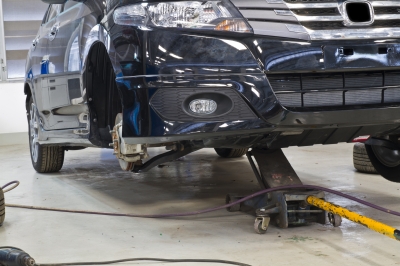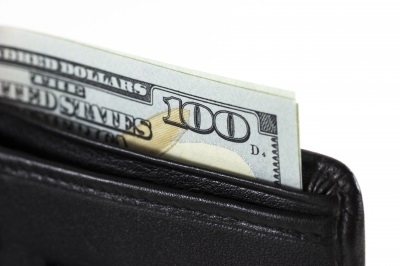
Last week, my oldest son Kellen started kindergarten. Having never been to preschool, we worried about how well he would make the transition. The first 2 days went smoothly, but Wednesday? Let’s just say Wednesday did not go so well. That morning, at drop off, Kellen threw the tantrum of all tantrums right outside the main entrance of the school. My wife Alissa texted me at work to let me know what happened, and that gave me the rest of the day to prepare my first big “dad talk.”
But Wednesday had more in store for the Porteous family.
As I left my office that afternoon, Alissa texted me again. Our mini van broke down on the way to her parents’ house. Thankfully, she was able to get it there, but it wasn’t going to be a simple fix.
When I arrived home, I raced inside to change and grab a few things for my wife and kids. On my way up the stairs, I fell and banged my elbow on the handrail. “Ok, Wednesday. You’re winning so far, but we’re the Porteous family. We won’t be defeated.” I jumped in my car and drove to my in-laws’ house. And what would await me there? Oh just some shattered glass from a lamp my youngest son Nolan knocked over….
One of those days
Have you ever had one of those days? We certainly have. And several years ago, you know what would’ve been my number one focus? The cost to fix the van. But to be honest, I wasn’t the least bit concerned about it. Why? Because we had an emergency fund in place. This sense of financial peace allowed me to focus on the issue that needed the most attention that day: Kellen. That night, I listened to his fears about school and gave him that big “dad talk.” I’m proud to say he closed out the week on a high note. In fact, he even got stickers for being the quietest in class on Friday.
But without the emergency fund in place, I would’ve been preoccupied with the van. I might have even been tempted to skip the “dad talk” with Kellen and just hope that he would do better the next day. Instead, I got the van towed and fixed, and by Thursday afternoon it was ready for us again with a $675 hit to our emergency fund.
If there’s one thing I can guarantee in life, it’s that emergencies will happen. And they often arise at the most inconvenient times. In just the last 4 years, we’ve faced:
- a leaky roof
- a broken garage door
- various plumbing issues
- repairs to our air conditioning
- a job loss
- a beehive in our attic
- a 7-night stay in the hospital when we lost a baby (and I almost my wife).
Altogether, these cost us more than $50,000. Without an emergency fund, we would’ve been tempted to pay for each of these with a credit card, which would have increased our financial obligation exponentially. But our emergency fund allowed us to look at these as inconveniences, rather than catastrophes.
So, how do we do it? How does this whole emergency fund thing work?
First, we carry about 6 months’ worth of expenses in our emergency fund. That means we can pay our mortgage, electric bill, water bill, and other essential bills for 6 months. That also means we can cover our grocery shopping, gas for our cars, car insurance, and other life necessities for 6 months. This fund does not include money for vacations, restaurants, birthday gifts, or other non-emergency items. We’re talking about the bare necessities here.
Second, we only dip into our emergency fund for emergencies. It may seem silly to say, but sometimes the line can be blurred. Had the mechanic said our van was totaled, we may have considered using our emergency fund to buy a new one. But that’s not what an emergency fund is for. Instead, we include saving for a new car in our regular monthly budget.
Third, when an emergency arises, we sleep on it and discuss as a married couple before we spend the money. Obviously, this may not always be possible as some emergencies need to be taken care of immediately. But so far, we’ve never broken this rule.
Finally, we keep our emergency fund in a simple savings account that can be transferred to our checking account quickly. We need to be able to access that money fast, so we don’t keep it in mutual funds, CDs, or other investments.
But what if you don’t have an emergency fund? How do you build one?
Before anything else, you want to decide how much you want to carry in your emergency fund. For us, we decided on 6 months of expenses. We knew that amount would give us the peace of mind we needed. But everyone is different. You may be able to get away with less.
Once you’ve decided on the amount, save for it regularly in your monthly budget until you hit your goal. If you want to get there faster, try finding ways to sell some things or bring in other extra income. Or for those of you who get 26 paychecks a year (like I do), you will have 2 months in the year in which you get 3 paychecks instead of 2. Try to use all, or part of that paycheck, to put toward your emergency fund.
Above all, remember that emergencies will happen, and if you want to get out of debt, stay out of debt, or simply be financially healthy, you’ll want an emergency fund in place. That way when the car breaks down, the air conditioner goes out in the heat of summer, or a swarm of bees is buzzing around the roof of your house, you’ll have peace of mind to know that you can handle it. And you can focus on more important things, like your latest “dad talk.”
Relieve the underlying stress in your life
Many people don’t realize the underlying stress in their life is caused by financial troubles. Perhaps that’s you. Or perhaps it’s someone you know. I’ve been there. I’ve felt it. Thankfully, I’m not there anymore.
And I want to help.
As a certified financial coach (by Dave Ramsey’s team), I teach people how to take back control of their finances so they can have peace of mind and a better future.
If you’re looking to get out of debt, build some savings, or need help setting up your budget, schedule an appointment today (online or in-person), and I’ll help guide you on that path toward peace.




I’m adopting you…even if your Mom has to share. A wonderful blog.
Haha! Thanks Cheryl!